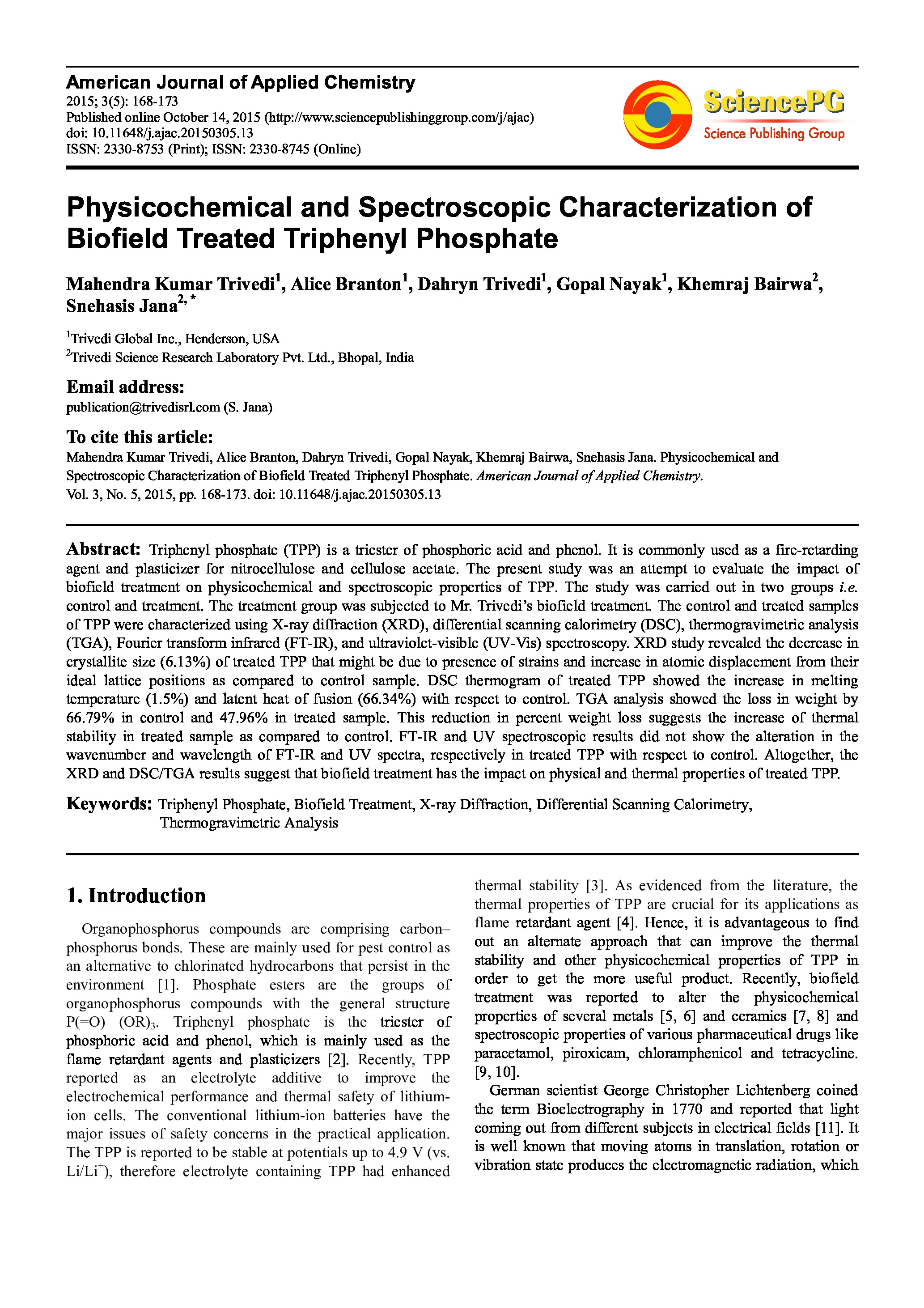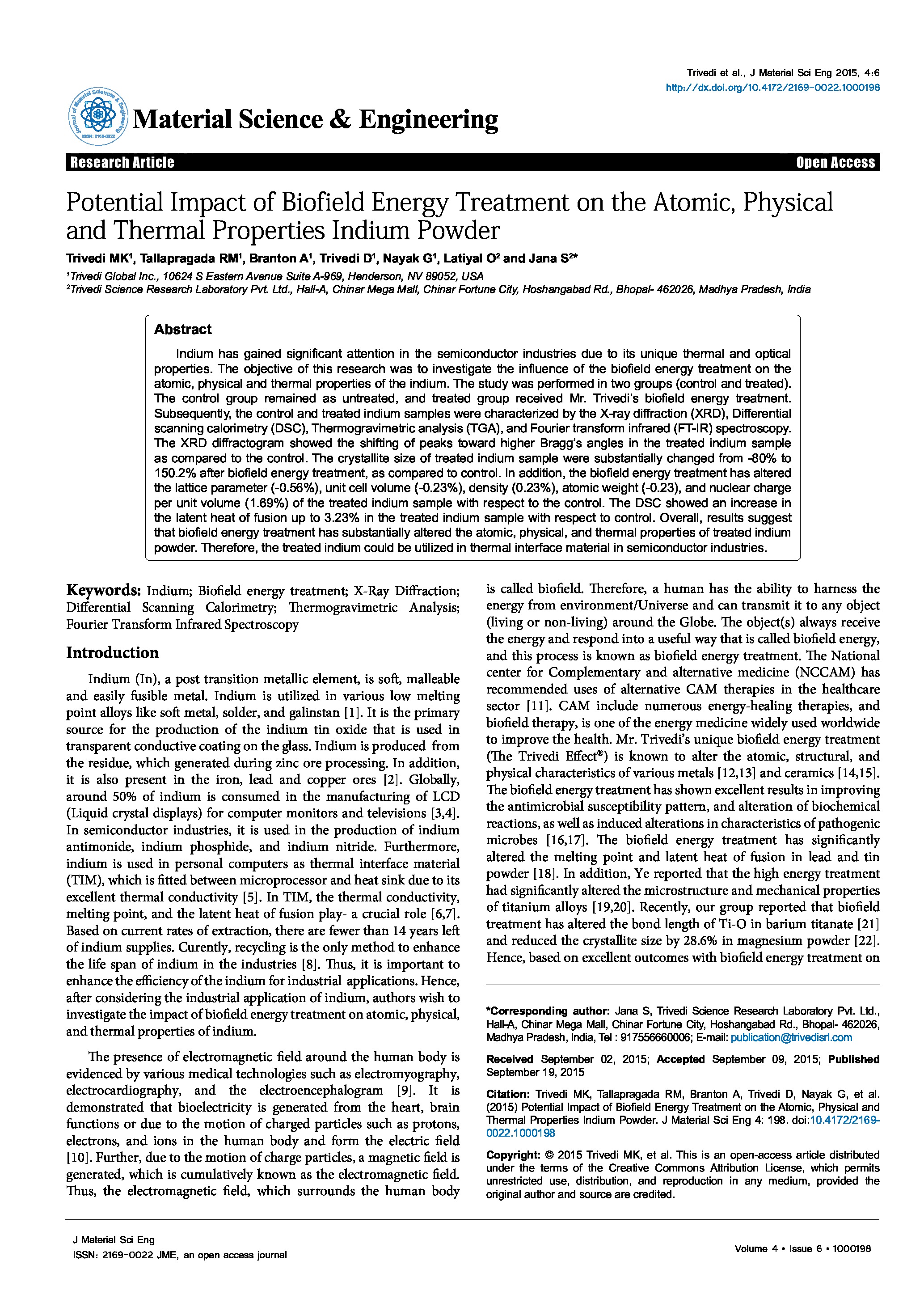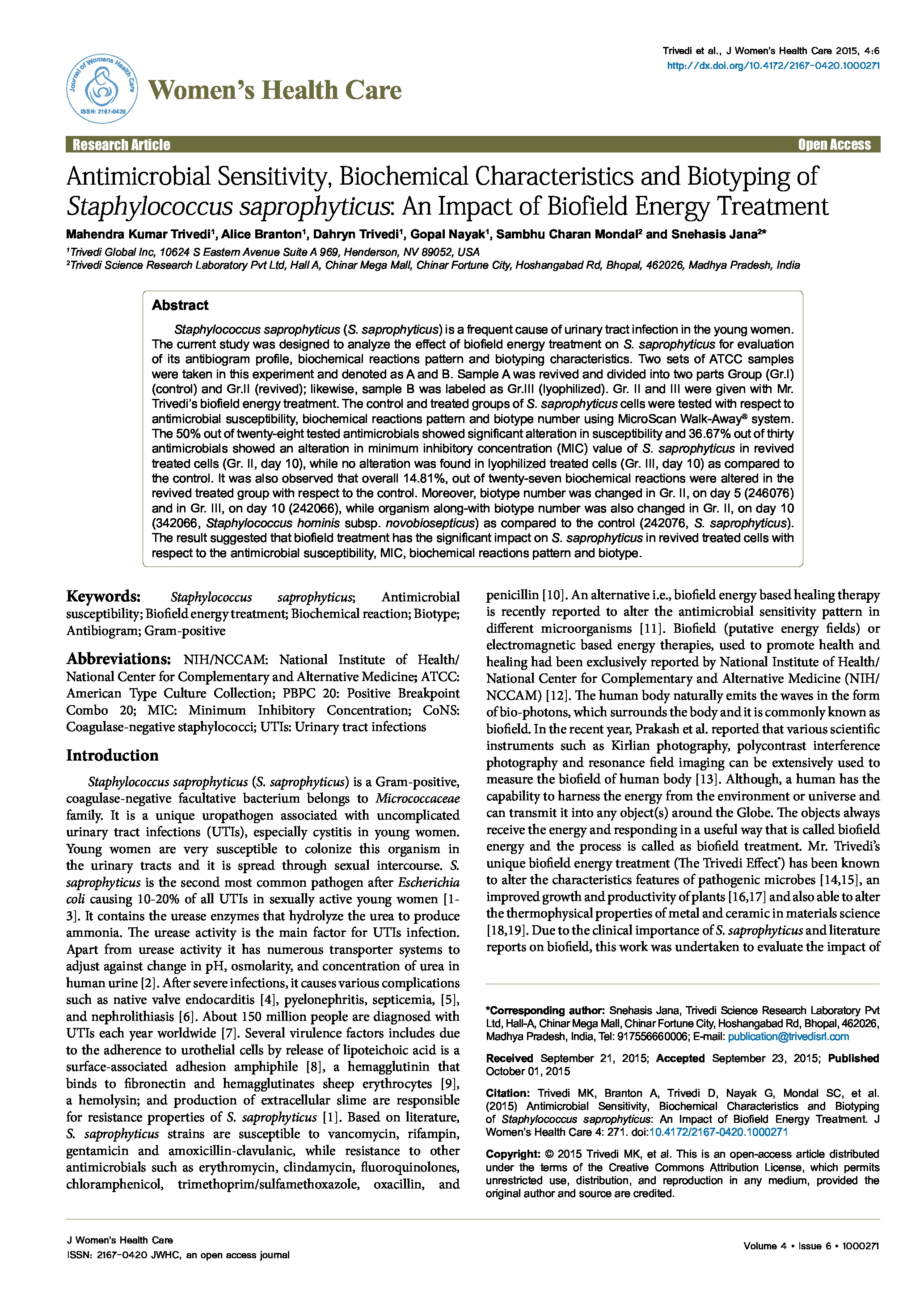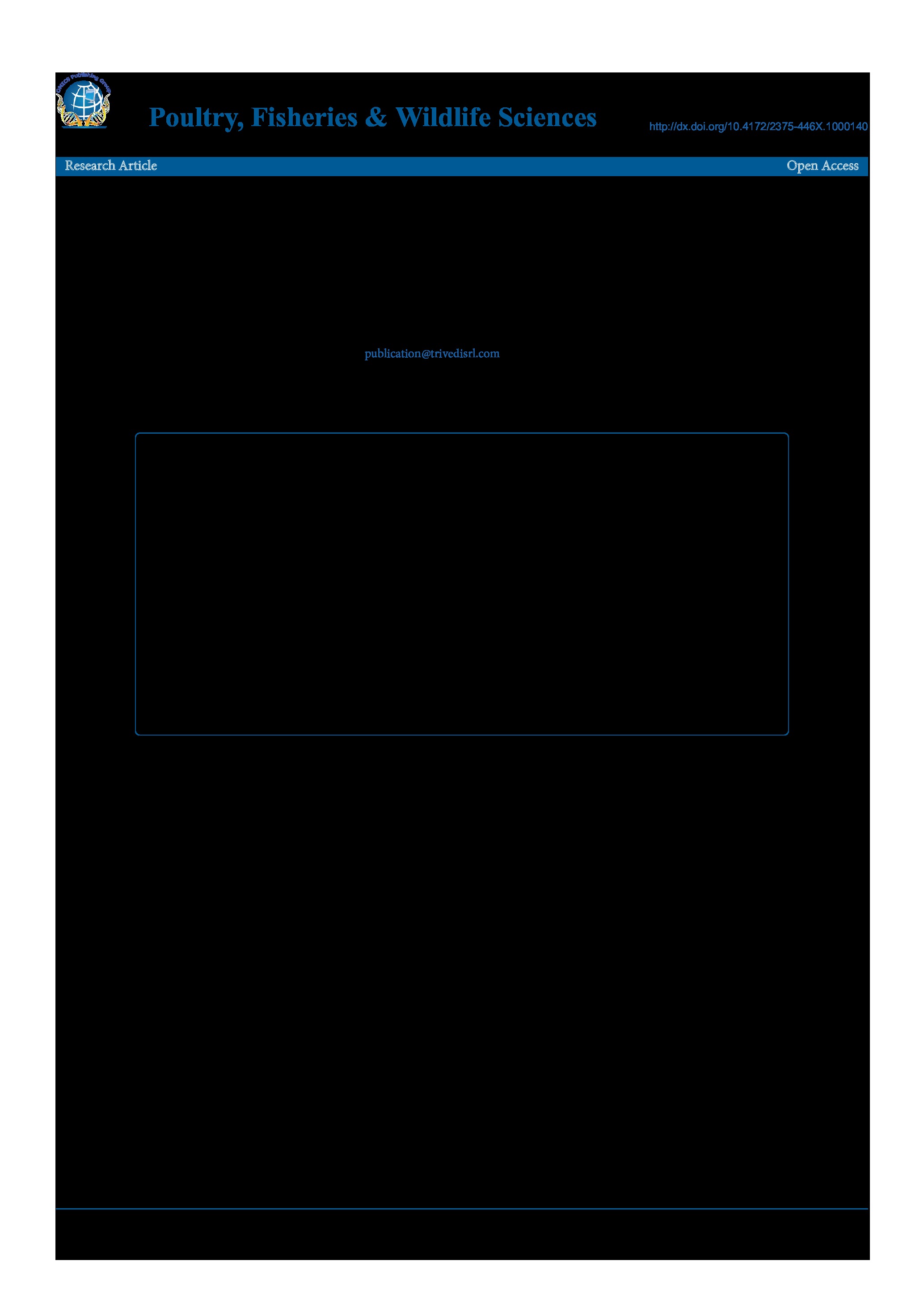Date of upload:
23.11.2016
Co-author:
Mahendra Kumar Trivedi, Rama Mohan Tallapragada, Alice Branton, Dahryn Trivedi, Omprakash Latiyal, Snehasis Jana
Abstract:
Indium has gained significant attention in the semiconductor industries due to its unique thermal and optical properties. The objective of this research was to investigate the influence of the biofield energy treatment on the atomic, physical and thermal properties of the indium. The study was performed in two groups (control and treated). The control group remained as untreated, and treated group received Mr. Trivedi’s biofield energy treatment. Subsequently, the control and treated indium samples were characterized by the X-ray diffraction (XRD), Differential scanning calorimetry (DSC), Thermogravimetric analysis (TGA), and Fourier transform infrared (FT-IR) spectroscopy. The XRD diffractogram showed the shifting of peaks toward higher Bragg’s angles in the treated indium sample as compared to the control. The crystallite size of treated indium sample were substantially changed from -80% to 150.2% after biofield energy treatment, as compared to control. In addition, the biofield energy treatment has altered the lattice parameter (-0.56%), unit cell volume (-0.23%), density (0.23%), atomic weight (-0.23), and nuclear charge per unit volume (1.69%) of the treated indium sample with respect to the control. The DSC showed an increase in the latent heat of fusion up to 3.23% in the treated indium sample with respect to control. Overall, results suggest that biofield energy treatment has substantially altered the atomic, physical, and thermal properties of treated indium powder. Therefore, the treated indium could be utilized in thermal interface material in semiconductor industries.




